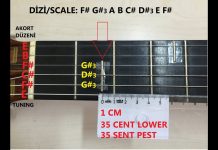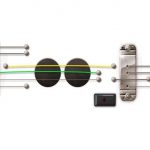Undoubtedly, your guitar can reach a broader audience and have a more powerful sound if you add an amplification system. This process, also known as “electrification,” can be carried out in several ways.
Pickups
A pickup is a device that converts the vibrations of the guitar strings into an electrical signal that can be amplified. There are several types of pickups you might consider for a classical guitar:
-Contact pickups: They adhere to the surface of the guitar and pick up vibrations directly from the body of the guitar (from the top in this case).
-Internal microphones: They capture the sound within the guitar’s resonance box and reproduce it in a more natural way.
-Piezoelectric pickups: They are placed under the guitar’s bridge and pick up the string’s vibrations. Magnetic pickups: They work only with metal strings and are not suitable for classical guitars with nylon strings.
For a classical guitar, contact pickups, internal microphones, and piezoelectric pickups are the most viable options.
Installation of the pickup
Once you have selected the method you consider most appropriate, the next step is installation. This process can vary depending on the type of system you have chosen.
-For contact pickups, you simply stick them in the desired location, usually at the bottom of the soundboard, near the bridge.
-For internal microphones and piezoelectric pickups, a more careful installation is required as their placement is more complex than in the previous case. Selection and installation of the preamplifier
A preamplifier is a device that amplifies the pickup’s signal to make it strong enough to be processed by the amplifier. Some pickups come with a built-in preamplifier, while others require you to buy it separately. To install a preamplifier, you will need to drill a hole in the guitar’s resonance box, usually on the side. This process can be tricky, and if you don’t feel capable, it’s best to have a professional do it.
Plug in and test it
Once you have installed the pickup and the preamplifier, the last step is simply to plug the guitar into an amplifier and test the sound. Now you can adjust the tone and volume using the controls on the preamplifier and amplifier.
Conclusion
Amplifying your classical guitar can be a challenge, but the end result is tremendously rewarding. It allows you to experiment with a wider range of sounds and provides you with the flexibility to play in a variety of environments, from small home recitals to larger venues.
It’s important to remember that this process involves significant changes to the guitar’s structure. While it’s possible to make some of these modifications yourself, especially if you’re handy, it’s advisable to contact a professional for the more complicated tasks. A qualified luthier will not only guarantee a correct and safe installation, but can also provide valuable advice on ways to improve the sound of your guitar.























